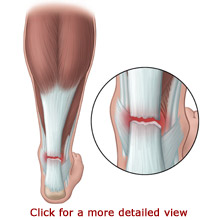 The motivation is there, the stars have aligned, and you're actually sticking to the plan. Turns out, you actually enjoy running (who'd've thunk it?)!
But then it starts. A little tightness here or a dull ache there. Nothing to worry about, your inexperienced mind says. Just run through it and it'll go away. “I'm on track and following a training plan!”
The motivation is there, the stars have aligned, and you're actually sticking to the plan. Turns out, you actually enjoy running (who'd've thunk it?)!
But then it starts. A little tightness here or a dull ache there. Nothing to worry about, your inexperienced mind says. Just run through it and it'll go away. “I'm on track and following a training plan!”
Perhaps you already know how that story goes?
Ever notice runners tend to get injured within a few months of consistent training? Almost makes you think we're better off being inconsistent. And I guess I could make an argument for that, too.
Today I want to briefly share with you how your body adapts to the stress of running. Hopefully this knowledge will help you make smart training decisions and understand why you are most likely to get injured when starting out or returning from previous injury.
Luck doesn't have much to do with it.
Your body's systems adapt to physical stress in a very predictable manner:
Neuromuscular → Cardiovascular → Muscular → Tendons/Ligaments → Bone
Although the ways the body adapts to training overlap – each one of those 'systems' is responding to stress all the time – some systems adapt more quickly than others.
First, you become more coordinated at what you are practicing. This is called neuromuscular adaptation and is the reason you can lift more during only your second weight training session and run farther after just a few runs. Your body is simply becoming more coordinated and that reduces the energy cost of the movement.
The next thing most runners notice is that they aren't breathing as heavily despite running the same pace. Your body is becoming better at getting blood to your muscles. Cardiovascular adaptation is that awesome phase when you start to admit that you actually like running. Weird!
Muscles take a bit more time and bodily  resources to repair and rebuild between training sessions. Remember how sore you felt after your first run – especially if you ran too fast? And remember how long it took to NOT feel sore? If you stuck with it, you probably didn't feel that sore again, right? Until your first all-out race ;-)
resources to repair and rebuild between training sessions. Remember how sore you felt after your first run – especially if you ran too fast? And remember how long it took to NOT feel sore? If you stuck with it, you probably didn't feel that sore again, right? Until your first all-out race ;-)
Connective tissue like tendons and ligaments are very dense soft tissue. They are inherently strong and require lots of stress to change. Too much, too soon, though and you're nursing tendonitis. Typically when you're performing training that exceeds the amount of stress your muscles can handle, you're asking for a tendon problem.
Finally, bone takes the longest to remodel and adapt to stress. I think of bone as lagging about 4-6 months behind the adaptation of the other systems. Say your muscles and tendons become fatigued and can't handle the stress, well, the next system in line is bone. Hello, stress fracture.
Now that you know how your body physiologically adapts to training hopefully you have a better appreciation of why you have to be extra cautious when starting a training program– especially as an adult. We can only train at the pace of the slowest adapting system – bone.
The next question is, how well can your body adapt? The answer should be "very well", yet that's often not the case. We'll discuss next time!
